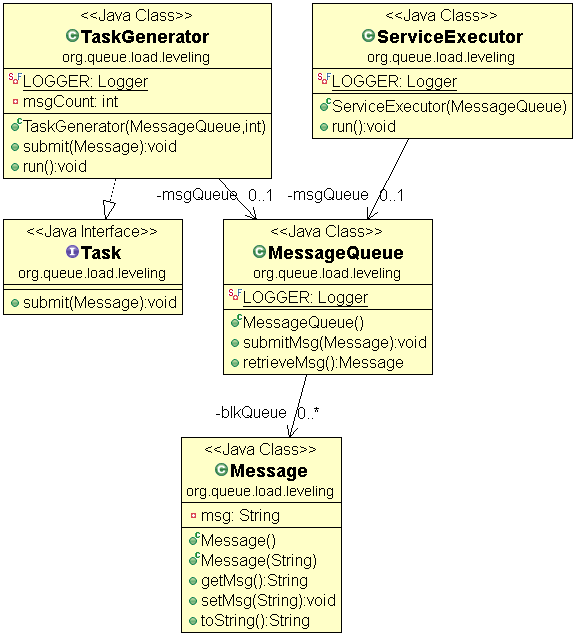* added pumlid where it was missing and possible * removed pumlid where it generated a bad image * regenerated some incorrect puml's * added 'left to right direction' puml prefix to some diagrams to improve the automatic layouting
layout, title, folder, permalink, pumlid, categories, tags
| layout | title | folder | permalink | pumlid | categories | tags | |||
|---|---|---|---|---|---|---|---|---|---|
| pattern | Queue based load leveling | queue-load-leveling | /patterns/queue-load-leveling/ | ROux3W8n30LxJW47IDnJxLLCOcM376VnP_VwX9xgZKOQwMtcg1w3RuykXQDIADztzyEU08fNRjttU8MHbYbEuhdC0PtZmfN26qzCbQmtIGUwauh1G5i0dw2Wn1DhOZg9kpGWB_zy3Xtv-FtOIEhQBm00 | Other |
|
Intent
Use a queue that acts as a buffer between a task and a service that it invokes in order to smooth intermittent heavy loads that may otherwise cause the service to fail or the task to time out. This pattern can help to minimize the impact of peaks in demand on availability and responsiveness for both the task and the service.
Applicability
- This pattern is ideally suited to any type of application that uses services that may be subject to overloading.
- This pattern might not be suitable if the application expects a response from the service with minimal latency.
Tutorials
Real world example
- A Microsoft Azure web role stores data by using a separate storage service. If a large number of instances of the web role run concurrently, it is possible that the storage service could be overwhelmed and be unable to respond to requests quickly enough to prevent these requests from timing out or failing.
